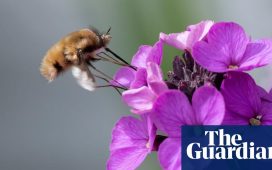When Jim died, we decided, having talked it through with the neighbours, to leave him where he was in the garden. Our friend had been good to us in life and there was no reason to assume that would change. Jim was a tree, a common alder, although given that alders are monoecious, or hermaphroditic, not the most appropriate moniker. He, or she, was named by our daughter Rosa, who often spent afternoons after school in Jim’s boughs, hugging the fissured grey trunk, as rough as an elephant. But despite being a similar age, with a similar lifespan, the alder didn’t long survive Rosa leaving home. Over several springs, its leaves became increasingly sparse and failed to unfurl properly. An orange stain appeared in cracks at the base of the trunk. Small branches began dying off, then larger ones. Last year Jim gave up the ghost altogether, a victim to alder dieback, the Phytophthora mould infection that is ravaging alders up and down the country.
Leaving the tree was an experiment. What would happen in its afterlife? It was soon a favourite with the neighbourhood’s greater spotted woodpecker, but examining the dead tree now, I notice dozens of small holes drilled up its trunk and fringed with sawdust: wood wasp larvae, plausibly those of Xiphydria camelus, the alder wood wasp. They develop into an ominous but beautiful insect, roughly the same size as a common wasp but predominantly black, with wings beaded black, like stained-glass windows, a large head on a narrow neck, the black flanks of the abdomen inflected with white, and colourful legs hovering somewhere between rust and orange. The tail ends in a slightly curved ovipositor, which might be mistaken for a sting but is in fact a complex wonder of evolution used to insert eggs an inch or so into the wood of a dead or dying alder.
Native but not common, these wasps have minor celebrity status, being the subject of a groundbreaking 1961 film by the naturalist Gerald Thompson, which unravelled the larvae’s nightmarish struggle against parasitical wasps and flies that hijack the wasp’s reproductive cycle. Jim has gone, but, tracing these boreholes with a finger, I feel a new chapter is about to begin.













